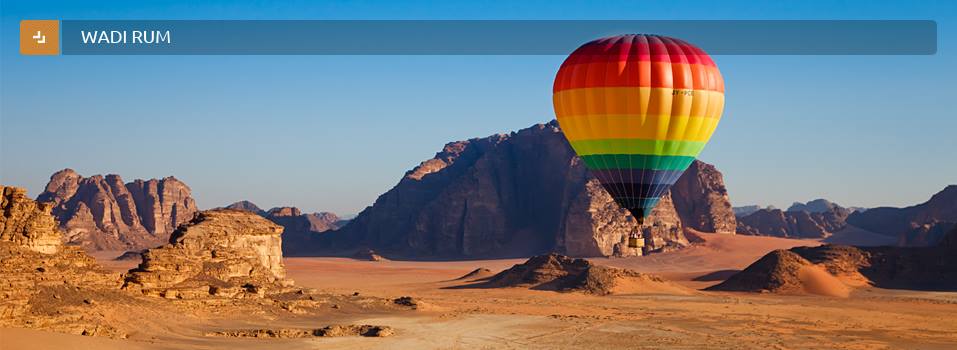
Wadi Rum is a beautiful mountainous desert region in southern Jordan. Although in terms of tourism numbers it pales in comparison to the world renowned site of Petra, it is becoming increasingly popular with tourists seeking to discover the natural beauty of the desert country.
It is not well served by public transport and is some 30kms from a main road - it is, after all, a desert. There are no amenities such as hotels, banks, ATMs, or shops. Rum village is merely a collection of simple houses.
One bus comes to Wadi Rum from Aqaba at 1 pm. One bus a day comes from Petra, and returns there soon afterwards. It leaves Petra at about 6.30am and arrives here at about 8am. Other than private car or taxis, there is no other way to travel to Wadi Rum village. We pride ourselves on making every aspect of your trip as enjoyable as possible, so we are happy to arrange a taxi for you to or from any place in Jordan.
History
Since prehistoric times, Wadi Rum has been inhabited by many civilizations, with many peoples–especially the Nabateans–leaving their mark in the form of rock paintings, graffiti, and temples. Nowadays, several Bedouin tribes inhabit Rum and the surrounding area, the most prominent of which is the Howeitat. While most of the inhabitants of Rum are no longer nomadic, there are still some families that live in the traditional way- moving from grazing area to grazing area with their herds of sheep, goats, and camels. You will certainly see some of these nomads’ tents on your trip through Wadi Rum.
In the West, Wadi Rum may be best known for its connection with British officer T. E. Lawrence, who based his operations here during the Arab Revolt of 1917–18. In the 1980s one of the impressive rock formations in Wadi Rum was named "The Seven Pillars of Wisdom" in reference to Lawrence's memoir of the same name, penned in the aftermath of the war.
The area was "discovered" as a climbing area in 1984 by Tony Howard, Di Taylor, Mick Shaw, and Al Baker. Howard and Taylor have since written two guidebooks:Treks & Climbs in Wadi Rum and Jordan - Walks, Treks, Caves, Climbs & Canyons, both published by Cicerone Press. Since then, tourism traffic has been steadily increasing as more and more people want to experience the beauty and serenity of Wadi Rum for themselves.
Tourism
The area is now one of Jordan's important tourist destinations and a key part of the economy in southern Jordan. Most of our clientele are from Europe and North America, although we occasionally have Arab tourists as well. Popular activities in the desert include camping under the stars, riding Arab horses, and hiking and rock-climbing amongst the massive rock formations. Jeep and camel tours, as well as backpacking, are also very popular.
Nonetheless, overall tourist numbers are still quite small in comparison to many other tourist sites in both Jordan as well as more traveled countries. Wadi Rum remains off the beaten path, and you can find peace, serenity and solitude in the desert.
.jpg)